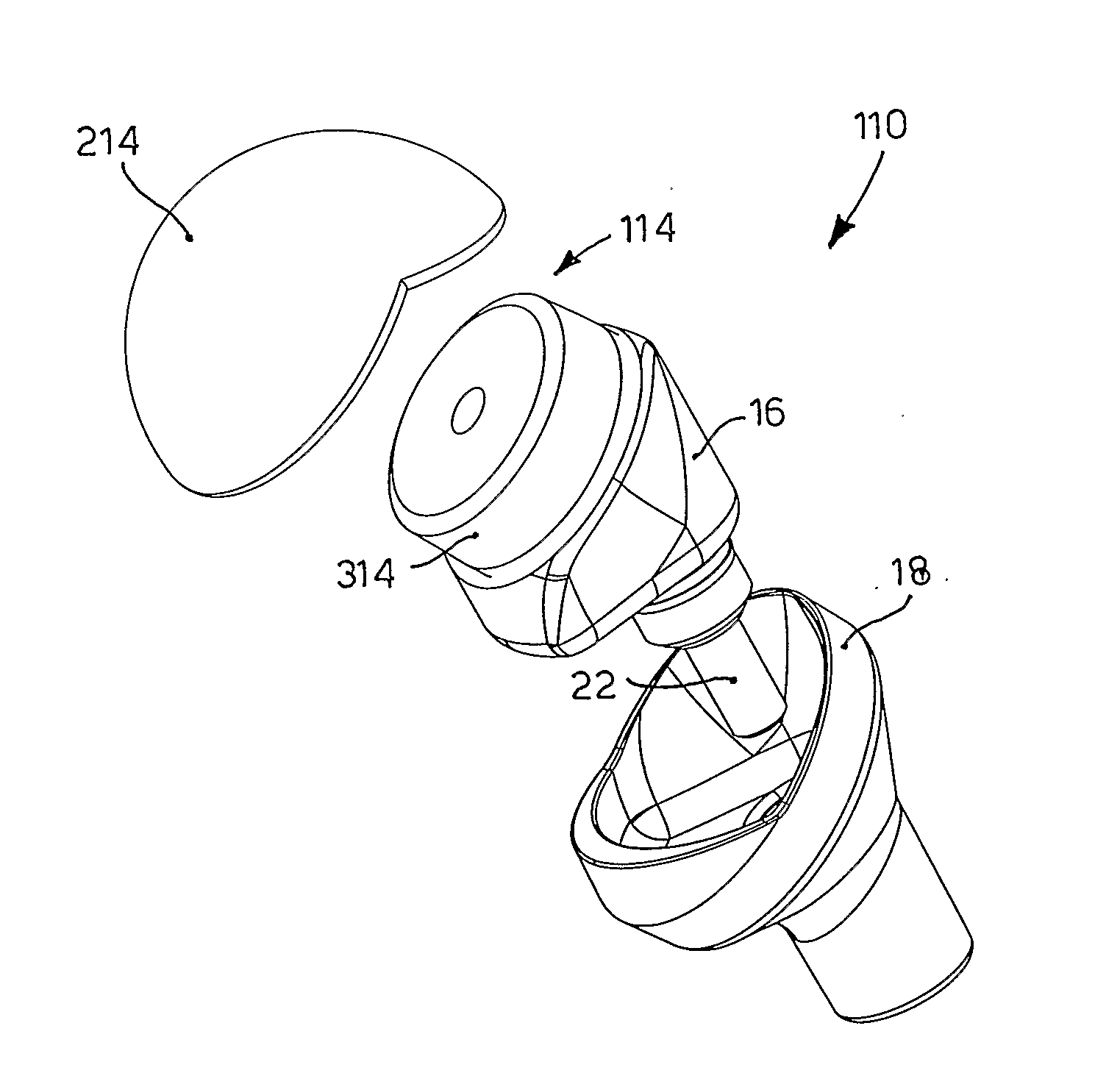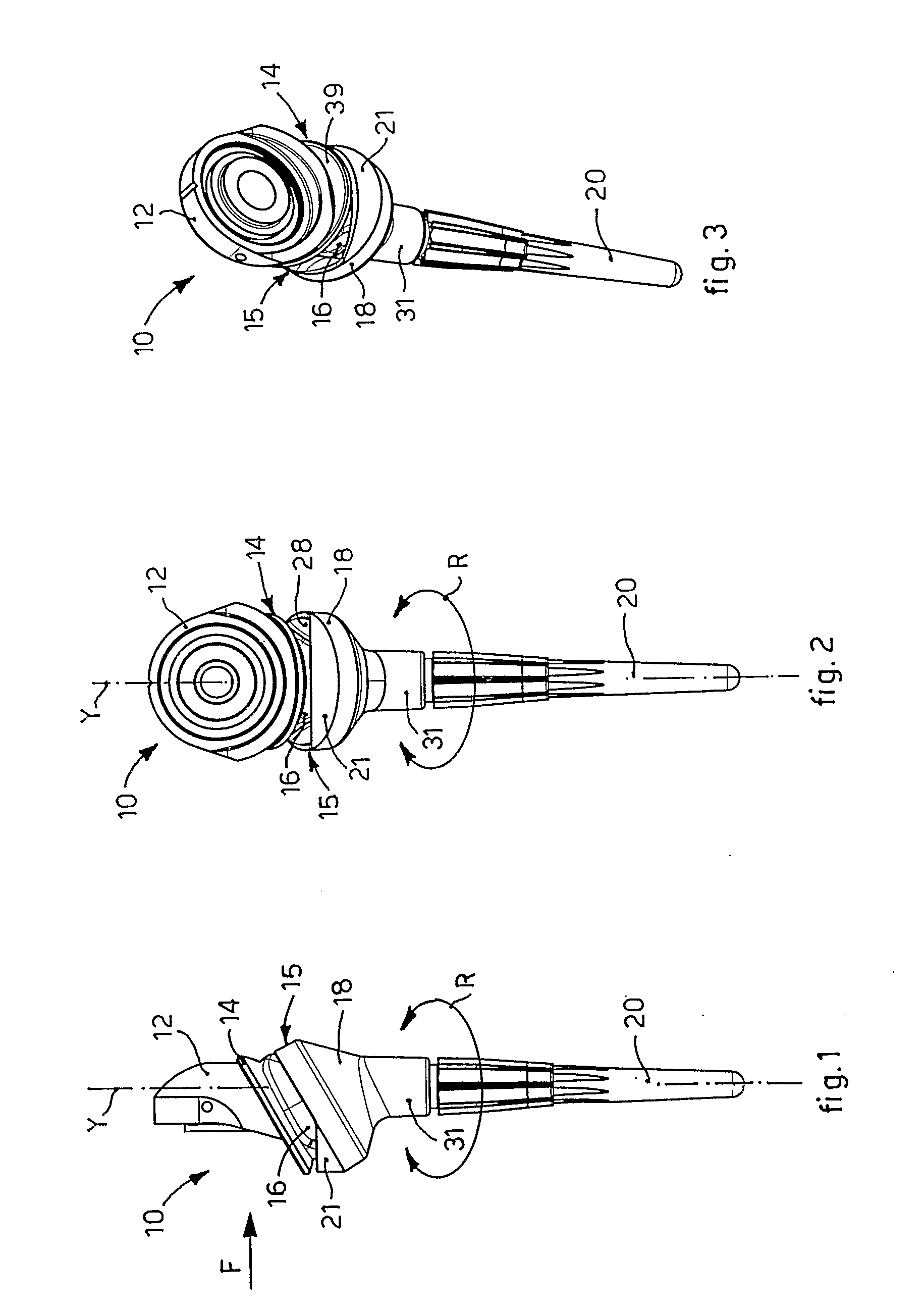Humeral prosthesis
a technology for prosthesis and humerus, which is applied in the field of humeral prosthesis, can solve the problems of articular instability, reduced bone strength, and difficulty in providing, and achieve the effects of reducing the risk of wear, good reciprocal positioning freedom, and increasing the degree of intra-rotation
- Summary
- Abstract
- Description
- Claims
- Application Information
AI Technical Summary
Benefits of technology
Problems solved by technology
Method used
Image
Examples
Embodiment Construction
[0060]With reference to FIG. 1, an inverse humeral prosthesis 10 comprises an articulation device 15 which is able to articulate with a corresponding glenosphere 12 made of polyethylene, fixed in the glenoid cavity, and to be fixed to the meta-epiphysary part of the humerus.
[0061]In the following description we shall refer mainly to an inverse prosthesis, but without excluding the application to an anatomical or normal prosthesis.
[0062]The articulation device 15 comprises an insert 16, made of polyethylene, pivoted around a pivoting axis Y to a humeral body 18, made of a cobalt-based alloy.
[0063]The device 15 also typically contains a connecting shaft 20 made of a titanium-based alloy, coaxial with the axis Y and fixed to the lower part of the humeral body 18. In particular, the shaft 20 has an end 19 with a determinate taper, for conical coupling with the humeral body 18.
[0064]In a known manner, the shaft 20 is able to be connected to the meta-epiphysary part of the humerus, so as ...
PUM
 Login to View More
Login to View More Abstract
Description
Claims
Application Information
 Login to View More
Login to View More - R&D
- Intellectual Property
- Life Sciences
- Materials
- Tech Scout
- Unparalleled Data Quality
- Higher Quality Content
- 60% Fewer Hallucinations
Browse by: Latest US Patents, China's latest patents, Technical Efficacy Thesaurus, Application Domain, Technology Topic, Popular Technical Reports.
© 2025 PatSnap. All rights reserved.Legal|Privacy policy|Modern Slavery Act Transparency Statement|Sitemap|About US| Contact US: help@patsnap.com



